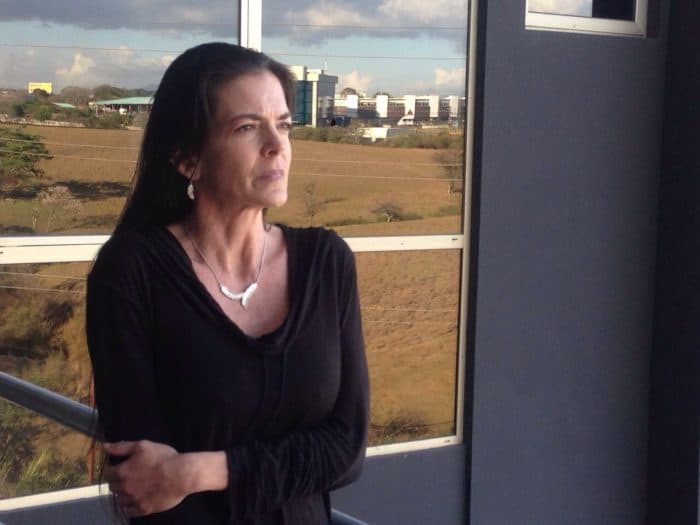
Six years and three murder trials since the death of her husband, one might expect Ann Patton’s tumultuous relationship with Costa Rica to be over. Not so: Patton, 45, faces the possibility of yet another murder trial, plus several legal battles over the couple’s lavish estate in southern Costa Rica, including a standoff with the government over its continued holding of a private gemstone collection valued at more than $7.2 million.
Patton’s husband, the late U.S. financier John Felix Bender, shot himself to death on Jan. 8, 2010 while lying next to her in bed in the couple’s jungle mansion in La Florida de Barú, Pérez Zeledón. Since then, prosecutors here have tried to prove – in three separate murder trials – that Patton actually pulled the trigger.
Although judges in the first criminal trial in January 2013 found her not guilty of murder, citing reasonable doubt, a second court found her guilty a year later following an appeal, sentencing her to 22 years in prison. With Patton hauled off to preventive prison, her lawyers appealed, sending the case to a third trial, where appellate judges acquitted her, again, and ordered her released from custody.
That was last September. Since then, Patton, who has consistently maintained that her husband’s death was a suicide, has left the country. But she still claims multi-million-dollar assets in Costa Rica, including a large wildlife reserve spanning thousands of acres, a lavish mountaintop home and personal items, including the gems, which Patton believes the government should have returned to her years ago.
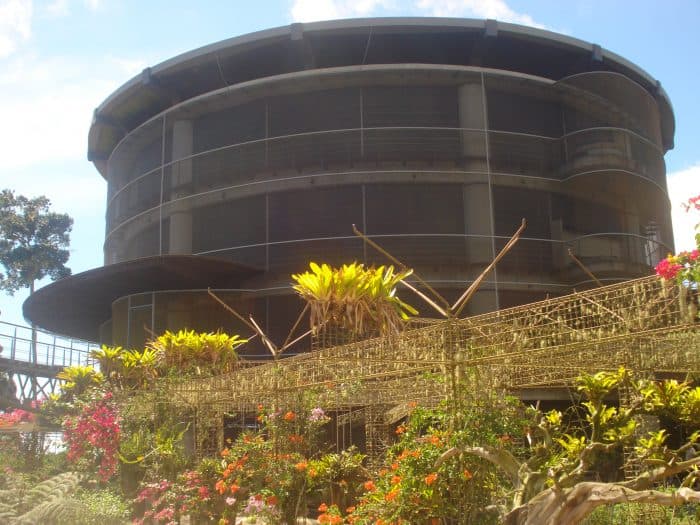
The raid, dropped charges and precious gems
In the chaotic aftermath of Bender’s death, investigators seized numerous items from the couple’s luxurious mansion in southern Costa Rica, where Patton and Bender had bought and reforested several thousand acres of land for a wildlife refuge they named Boracayán. The items included a refrigerator, household furniture, gym equipment and over 400 reproduction Tiffany lamps, valued at $80 to $12,000 a piece.
They also took the gems: a striking array of precious and semi-precious stones, including opals, rubies, sapphires and tourmaline, some set in ornamental jewelry including silver rings, aquatic animal-shaped brooches and elegant necklaces.
According to Peter Delisi, a longtime friend of Bender and now an informal spokesman for Patton, the couple bought the gemstones during several trips to the United States in 2008 and 2009. They were purchased as investments at the height of the global financial crisis, Delisi said, but their main purpose was to be displayed in the couple’s home, which also had extensive art glass and the replica Tiffany lamps.
“Both John and Ann had a passion for gemology and took advantage of the ‘fire sale’ prices that were the result of the 2008 global economic meltdown,” Delisi told The Tico Times in one of several emails. “Like any art or collectible, the gemstones were for their personal use, but obviously an investment. … They did not buy [them] to speculate like one would buy a stock or real estate.”
In a story published in Outside Magazine about Bender’s death and the first murder trial, writer Ned Zeman notes that the jewels played a key role in the prosecutors’ narrative about Bender’s death, with a theory that Patton had killed her husband to inherit the gems. That theory was never proven in court.
Zeman writes:
And there it was. The prosecution’s not-so-secret theory about motive was a noir classic: the lady wanted the jewels.
On the morning after John’s death, investigators found more than 3,000 gems inside the home: diamonds, rubies, opals. Some lay neatly arranged in custom-made display cases; others sat randomly on counters or were stuffed inside backpacks. According to prosecutors, most had been brought into the country illegally: no receipts, no duties paid.
Ann told me that everything had been legally acquired and that she was working on providing all the paperwork. But for the prosecution, an implied narrative began to form. The Wall Street bubble bursts in 2008. The Benders, facing liquidity problems, hit upon a cash business big on profits and short on tax oversight. But then the femme fatale kills her poor dupe to make off with the loot.
Investigators seized the jewels the morning after Bender’s death, and a month later, in February 2010, they accused Patton of money laundering and racketeering, and later of smuggling contraband, Patton said.
The money laundering and racketeering accusations – which came long before Patton was charged with murder in August 2011 – eventually were dropped, but not the contraband charge. According to Prosecutor’s Office spokeswoman Tatiana Vargas, on July 29, 2012 the Special Prosecutor’s Office for Organized Crime moved forward with formal charges against Patton for violating Costa Rica’s General Customs Law by acquiring and storing jewels that “entered the country by eluding customs control.”
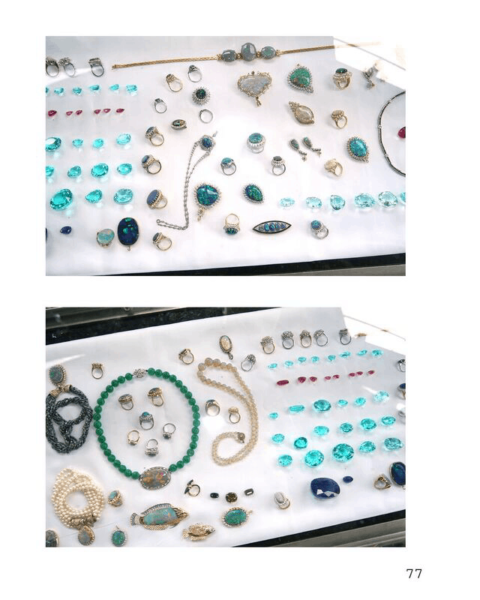
At the center of that accusation were the questions of how and when the gems were brought into the country, and for what purpose.
But the law Patton was accused of violating was amended two months later, leaving prosecutors without a case. On Oct. 28, 2014 – more than two years after she was formally charged with smuggling – the Second Circuit Criminal Court of San José dismissed the customs violation charge against her.
After that ruling, custody of the jewels, which a court-appointed expert had appraised at $7,234,990.77, was turned over to the General Customs Office “for that agency to collect the corresponding taxes that had not been previously collected by the Costa Rican government when the jewels entered the country.” Vargas from the Prosecutor’s Office said the unpaid taxes totaled $1,538,759.63.
According to the spokeswoman, the judge in that case did not see reason for the judicial branch to maintain custody of the jewels “because there was no crime to prosecute.”
The tax issue
Without a crime to prosecute, did Patton actually owe taxes on the gems, which she maintains are personal items and, therefore, not subject to taxes?
The government believes so, but hasn’t been able to provide a definitive answer as to why, and how much is due, despite the figure quoted by the Prosecutor’s Office to The Tico Times.
Patton’s spokesman Delisi stressed that customs officials at the airport did not question Bender and Patton about the gemstones, nor did they require taxes be paid on the gems during any of the trips between the U.S. and Costa Rica, although Delisi could not say if the two filled out customs forms declaring the items.
“There was no reason to declare the gems as they were personal possessions,” Delisi said. “Upon visual inspection, [Patton] was not questioned. There was no form.”
Like many things in Costa Rica, customs laws regarding personal items are open to a degree of interpretation, a legal expert consulted by The Tico Times said. For example, if you enter the country wearing a $35,000 Rolex watch, it would be considered a personal, tax-exempt item. But what if you brought in two Rolex watches?
Delisi argued that because customs officials at the airport did not charge taxes on the gems, or even question the couple at the time, and because a court found no crime had been committed, customs officials should not have reason to continue holding them.
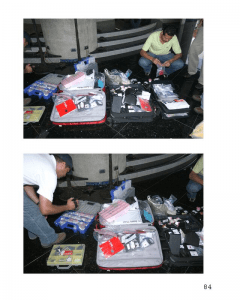
When the criminal court dropped the smuggling charges against Patton, it turned custody of the gems over to the General Customs Office. But it is the Central Customs Office – a separate office – that must now determine who owns the gems, as well as any possible taxes due on them, according to Roy Chacón, assistant director of the General Customs Office.
Despite her assertion that she owed no taxes on the gems, Patton said she reached a verbal agreement, through her attorneys and Delisi, last December with the former manager of the Central Customs Office, Enilda Ramírez, to pay $1.5 million in taxes in order to get them back.
According to Delisi, in a Jan. 8 meeting, customs officials and Patton’s attorneys “walked through the entire process of the inventory and steps to hand over the gems, and pay the tax.” The process finally seemed to be moving forward after dragging on for years.
The ownership question
According to Chacón, part of the customs agency’s mandate regarding the gems – and one reason for its decision to continue holding them – is to determine their ownership. Documents obtained by The Tico Times show the Central Customs Office conducted a review of the ownership question in a Jan. 13, 2016 report from the office’s department of procedural review sent to Ramírez, the manager.
As part of due diligence in the case, the study noted that in May 2015, customs officials had consulted the Second Circuit Penal Court judge about the ownership of the jewels and other items seized from Patton’s home. The judge responded on July 6, 2015, confirming the gemstones were removed “from Ms. Ann Maxine Patton’s home,” and adding that the court “no longer had the jurisdiction to resolve the ownership issue.”
Another statement cited in the customs report from the Government Attorney’s Office noted that, “On Jan. 8, 2010, the accused, Ann Maxine Pattron [sic], known as Ann Bender, stored/had in her possession in her home located in San José, Pérez Zeledón, a collection of jewels, precious and semi-precious stones, … merchandise acquired outside of Costa Rica and brought into the country. … ”
No other individual or corporation had disputed Patton’s claim to ownership of the gems, the report added.
Another section of the ownership report addressed the question of whether the gems could be declared by the government as “abandoned,” a legal status describing potential evidence in judicial proceedings that remains unclaimed within a month of the end of those proceedings. Patton’s lawyer filed a claim for ownership of the gems on her behalf within the appropriate time allotted by law, and the report concluded that they could not be declared abandoned.
The report also cited a court ruling from Nov. 27, 2014 – a month after smuggling charges against Patton were dropped – that stated: “The previously cited norms clearly indicate that items can only be held in custody when a crime was committed.”
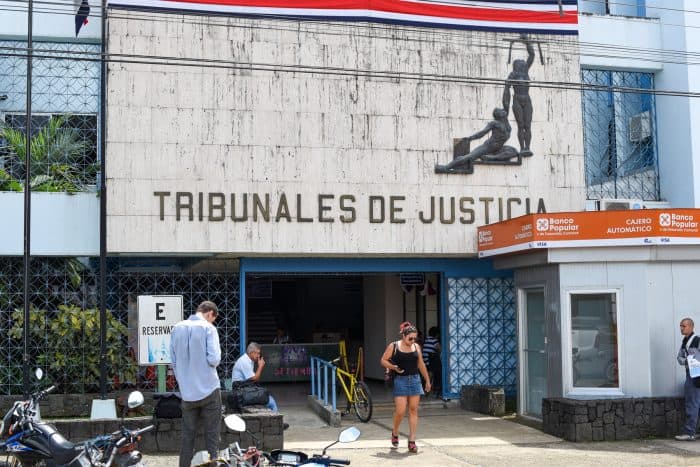
‘Under review’
With ownership of the gems already established by an internal customs review, and with a $1.5 million tax payment ostensibly agreed upon by both sides, Patton said she was convinced the process would move forward in early January. But since then, it seems to have hit a bureaucratic wall, she said.
On Jan. 15 – two days after the gem ownership report was submitted to Ramírez – she was replaced as manager of the Central Customs Office by Guiselle Joya, whose last name, in one of many strange coincidences in Patton’s case, means “jewel” in Spanish. After that, communication began to break down between the two sides, Patton said.
Joya “started asking questions that really had no bearing,” Patton told The Tico Times in a telephone interview, adding, “this was an administrative procedure, and she just stalled it out by asking questions, by simply being completely intransigent and ignoring the deal that had been in place.”
Patton said she found it “peculiar” that the Costa Rican government “would not see [the tax deal] as being a positive for everyone.”
In a March 11 telephone interview with The Tico Times, Chacón would not confirm or deny that a verbal agreement had been reached regarding the taxes. He said that while Patton and her legal team had been pushing for a prompt tax payment, there were unresolved issues, including who owns the gems and what exact amount of taxes is due. Chacón said the Central Customs Office had jurisdiction to resolve those pending issues.
The Tico Times sought an interview with Joya or other officials from the Central Customs Office, but was told by a Finance Ministry spokeswoman that only Chacón was authorized to speak about the case.
After sending follow-up questions by email, we were told: “According to the General Customs Office, until the process of reviewing the case is concluded, we cannot provide any further details.”
In the initial interview with Chacón, The Tico Times asked what documents customs officials were waiting on to move forward.
“There have been a few requests made to the prosecutor, in order to obtain proof and criteria to have complete clarity regarding the issue, and to determine ownership of the merchandise, and to make a decision.”
The Tico Times asked what decision Chacón was referring to.
“The part that corresponds to Central Customs, the appropriate paperwork by them, to have clarity about the jewels and the items that are being processed to generate a customs declaration and the respective tax payments,” he said.
“For us, charging the tax isn’t the only important issue, we must also have clarity that the owner of the merchandise effectively is Ms. Ann [Patton] in order to proceed to charge [the tax],” Chacón said.
Asked how long the process would take, Chacón said, “I can’t give you a date, given that Central Customs has jurisdiction to analyze and resolve the case.”
One possible explanation for the delay, according to the legal expert consulted by The Tico Times, is that given new management, Central Customs officials may be re-examining the $1.5 million tax figure to determine how it was calculated. They also may be looking at the appraisal to see how it was conducted.
In an email on Tuesday, The Tico Times asked a spokeswoman for the Finance Ministry for a clarification of the specific law under which customs continues to hold Patton’s gems, and how they would be appraised. This story will be updated with any response received.
Patton, who remains skeptical about the recent delays in recovering the gems, said she can’t figure out why the Costa Rican government would stall a $1.5 million voluntary tax offer.
“I’m doing the best that I can to simply analyze the situation and find some logic,” she said. “Of course, it’s a little difficult for me not to smell a rat.”
Chacón from the General Customs Office said that the legal issues with the gemstones are separate from the appeal of Patton’s murder acquittal. Attorneys on both sides presented their arguments to an appellate court last January – almost six years to the day of Bender’s death – on whether the latest verdict should be upheld, or whether the case should be sent to an almost inconceivable fourth trial.
“The criminal part of the case is something that we have no participation in,” Chacón said.
Besides the drawn-out battle over the gems and the possibility of yet another murder trial, Patton also has an outstanding legal accusation against a former trustee for allegedly stealing tens of millions of dollars from the couple’s estate. Her attorneys have filed a joint criminal and civil complaint against the man, who last September was ordered to surrender his passport pending an investigation.
But Patton has received some, at least partially good news in the past few weeks: Officials finally returned her household items, including the furniture, refrigerator, gym equipment and all of those reproduction Tiffany lamps – with no taxes due.
However, when the lamps arrived, according to Patton, more than half were damaged or broken.






